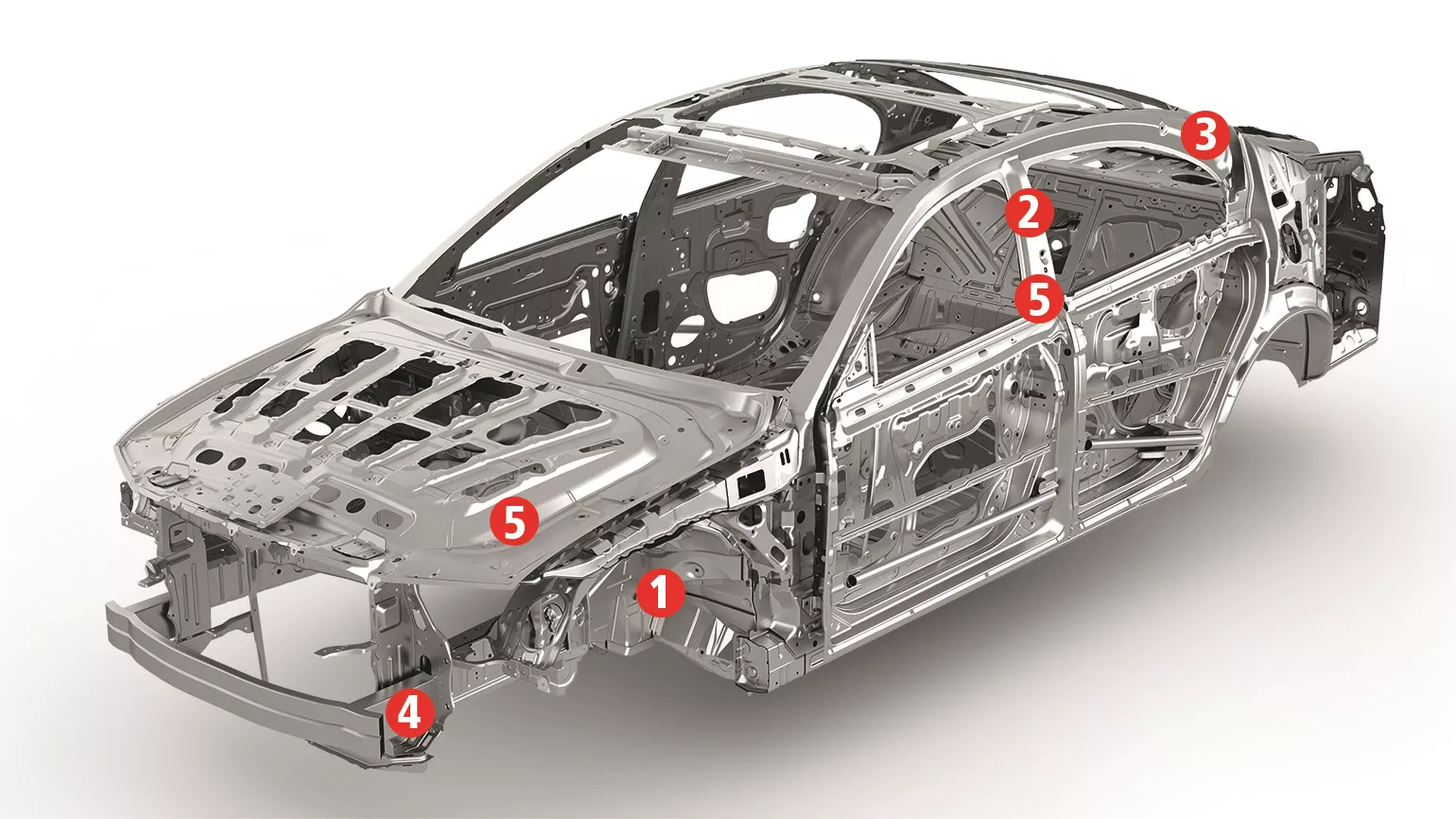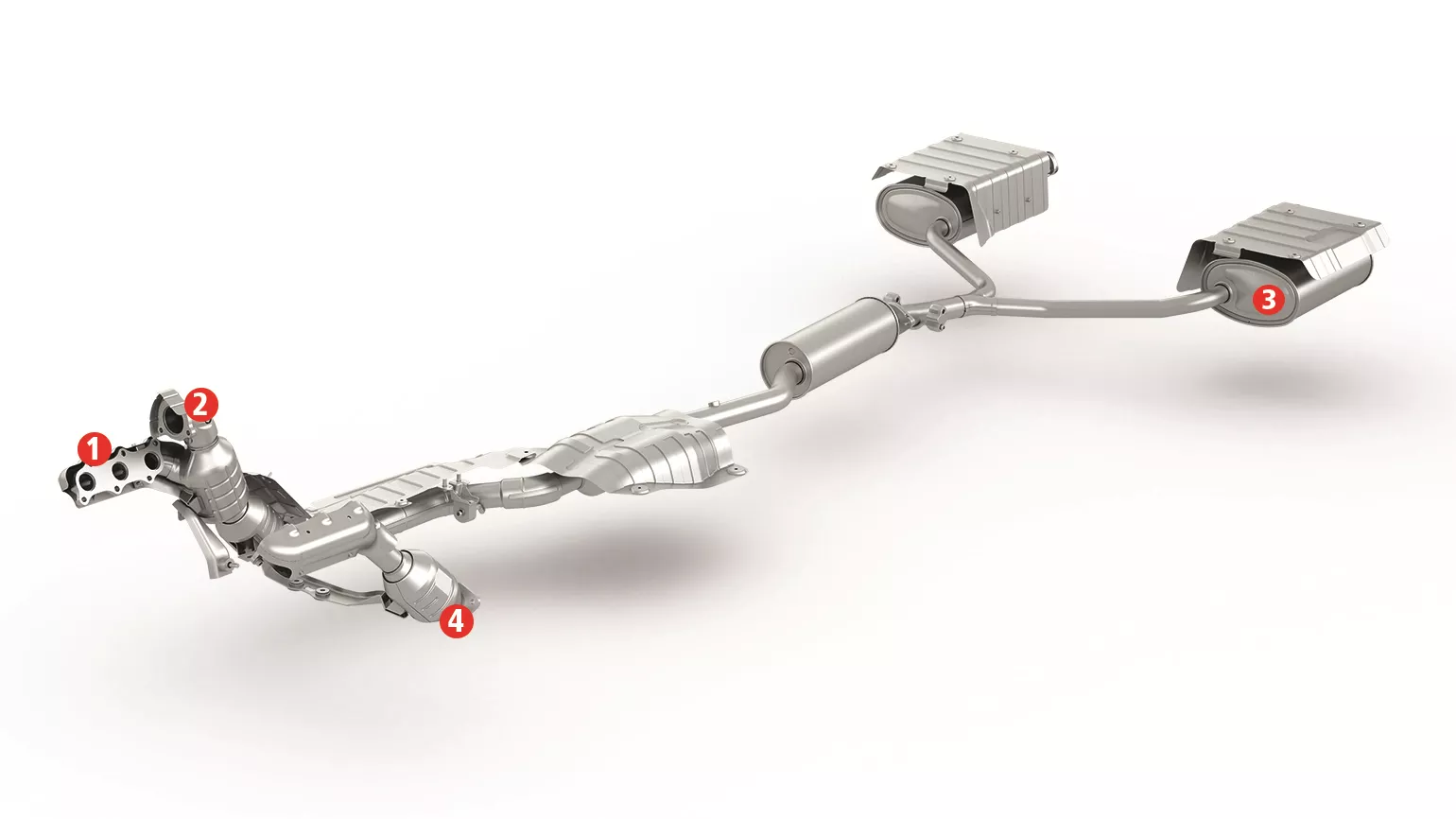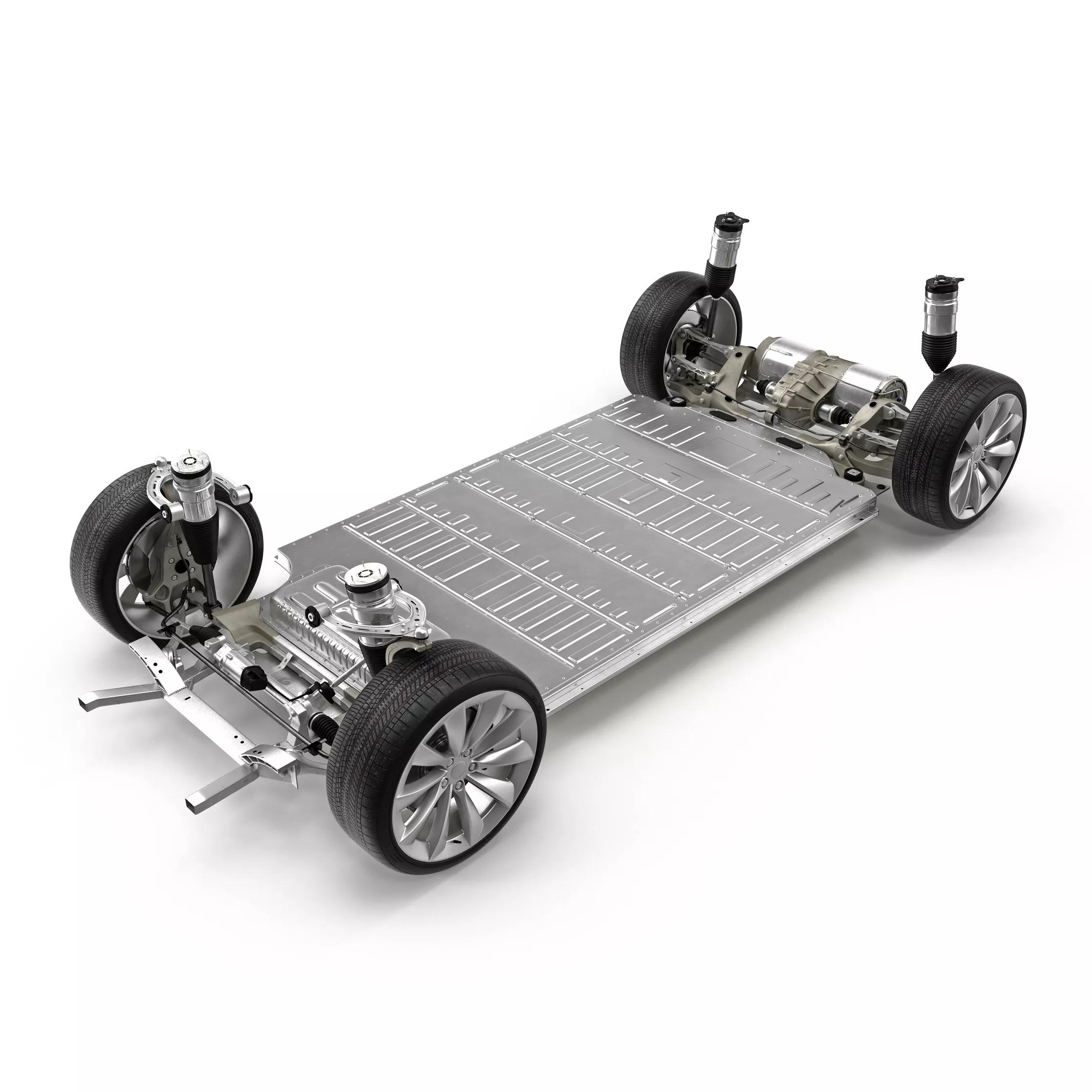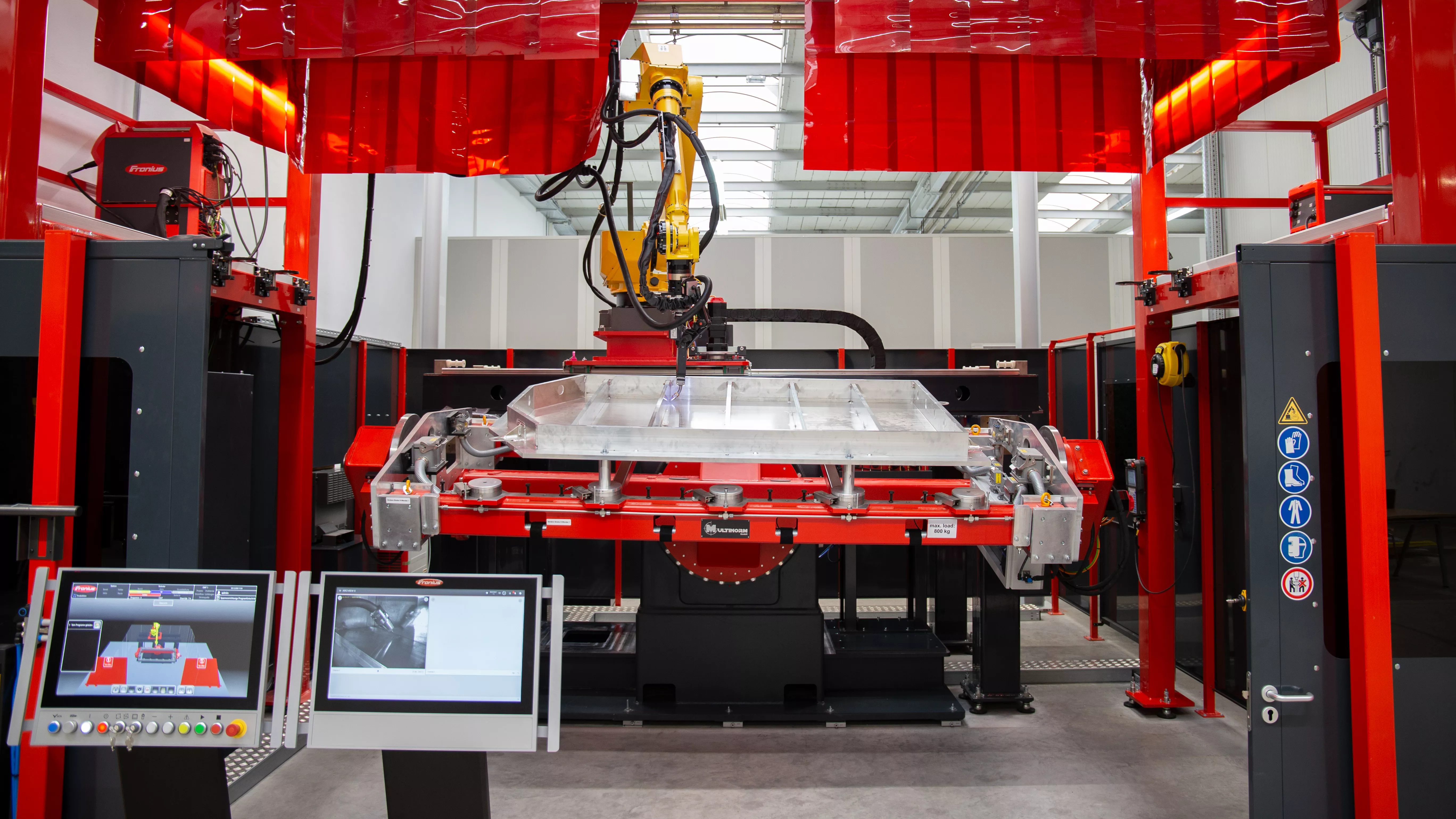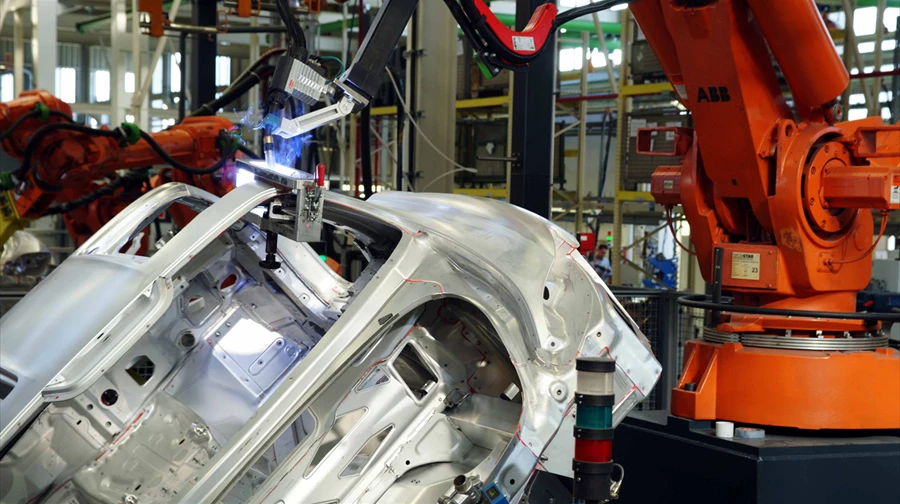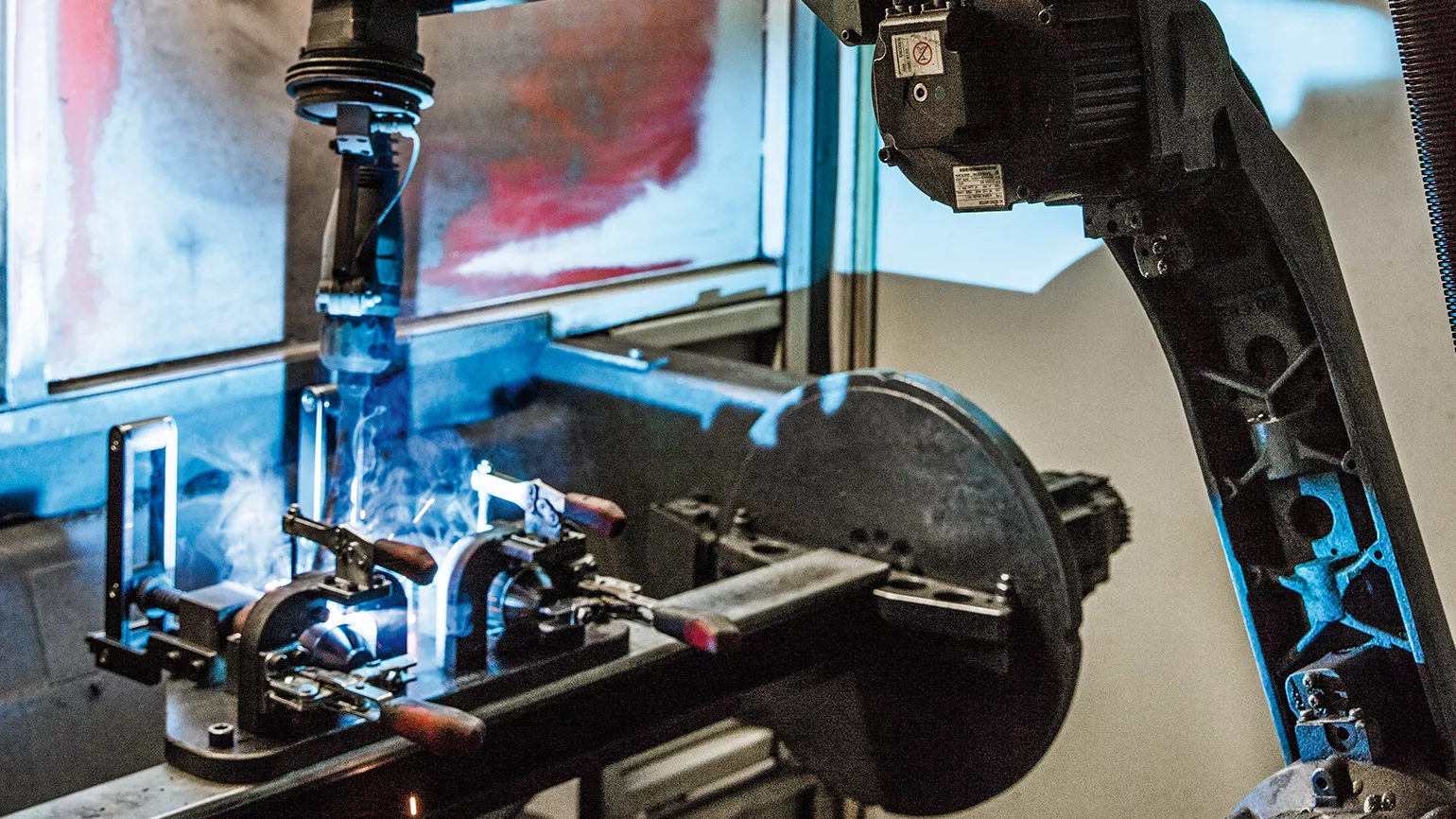Welding in the Automotive Industry
Time and cost optimized
production processes

Challenge
Modern vehicles need to meet increasingly strict regulations (in ex. lower emissions), but at the same time customers expect more and more safety and comfort features. The automotive and supplier industry therefore relies on lightweight concepts, and light metals such as aluminum and magnesium, as well as high-strength and super-high-strength steels, are becoming increasingly important as materials.
This also means that welding technology is facing new challenges, and requires innovative solutions. Cost effectiveness is also crucial in the automotive industry, and in order to keep up with international competition, manufacturers and suppliers need to make their production processes as efficient as possible in terms of time and costs.
Partner in the automotive industry

Quality
- First class products according to the highest industry standards
- Outstanding service from highly trained specialists
- Worldwide support directly on the customer’s premises

Cost effectiveness
- Technology and innovation leader in welding technology
- Professional training for your employees
- Comprehensive knowledge of the automotive and supplier industry

Know-how
- Time and cost optimized production processes
- Seamless integration into the production process
- Constant new development and further development of efficient welding processes

Good relationships
- 25 years of experience in the automotive industry
- Long-term partnerships and reliable cooperation with customers around the world
QUESTIONS ON WELDING SOLUTIONS FOR THE AUTOMOTIVE INDUSTRY?

Contact Your Fronius Partner for the Automotive Industry
Body in white
Whether steel, aluminium or mixed applications.
Fronius offers the optimum welding process.
Challenge
- Minimized spatters on welding and brazing for galvanized steel
- Low distortion due to optimized heat input
- Low porosity
- Stable arc
- Optimum penetration
- High welding speeds
Solution
Platform:
TPS/i
Processes:
PMC technology (Advanced GMAW-P)
CMT (Advanced GMAW)
LaserHybrid (LHAW)
Challenge
- Lower heat input (-20% to -35%) than with conventional gas metal arc welding
- Reduced/controlled distortion through advanced processes
- Reduced rework through advanced arc control processes
Solution
Platform:
TPS/i
Processes:
PMC technology (Advanced GMAW-P)
CMT (Advanced GMAW)
LaserHybrid (LHAW)
Challenge
- Fast brazing (up to 3 m/min)
- Lower heat input
- Flat and clean weld seam
- Best weld seam appearance
- Up to 60% less shielding gas
- Spatter-free
Solution
Platform:
TPS/i
Processes:
LSC technology (Advanced GMAW, GMAB)
PMC technology (Advanced GMAW-P, GMAB)
CMT technology (Advanced GMAW, GMAB)
CMT braze+ technology (Advanced GMAB)
LaserHybrid (LHAW)
Challenge
- High stability of the arc
- Lowest heat input
- Steel-aluminum joints possible
- Minimal spattering
- High gap-bridging ability
- Cast aluminum joining
Solution
Platform:
TPS/i
Processes:
PMC technology (Advanced GMAW-P)
CMT technology (Advanced GMAW)
LaserHybrid (LHAW)
Welding challenges
- High welding speeds
- Joining different materials (Steel-aluminium joints possible)
- Flat and clean weld seam
- Lowest heat input and low distortion
- Spatter-free welding
Exhaust gas systems
Material: ferritic chrome steel
Challenge
- High component tolerance
- High welding speed
Solution
Platform:
TPS/i
Processes:
PMC technology (Advanced GMAW-P)
CMT technology (Advanced GMAW)
Material: stainless steel
Challenge
- Minimum spatter
- Stable arc
- High Welding Speed
Solution
Platform:
TPS/i
Processes:
PMC technology (Advanced GMAW-P)
CMT technology (Advanced GMAW)
Material: ferritic chrome steel
Challenge
- Minimum spatter
- Stable arc
- High welding speed
Solution
Platform:
TPS/i
Processes:
PMC technology (Advanced GMAW-P)
CMT technology (Advanced GMAW)
Material: ferritic chrome steel
Challenge
- Good penetration
- Good gap-bridging ability
- High welding speed
Solution
Platform:
TPS/i
Processes:
PMC technology (Advanced GMAW-P)
CMT technology (Advanced GMAW)
Welding challenges
- Welding very thin materials and thick to thin combination joints
- Joining materials of different thicknesses (flange)
- Multiple sheet joints
- High component tolerances
- Damage to sensitive parts such as catalytic converters or particle filters by welding spatter
- Cost effectiveness in production, large quantities
Chassis
Material: steel
Challenge
- High welding speed
- Continuous root formation
Solution
Platform:
TPS/i
Processes:
Pulse technology (GMAW-P)
PMC technology (Advanced GMAW-P)
Material: steel
Challenge
- Good penetration
- Less spatter
- High welding speed
Solution
Platform:
TPS/i
Processes:
Pulse technology (GMAW-P)
PMC technology (Advanced GMAW-P)
Material: aluminum, steel
Challenge
- High welding speed
- Low heat input
- Good gap-bridging ability
Solution
Platform:
TPS/i
Processes:
Pulse technology (GMAW-P)
PMC technology (Advanced GMAW-P)
Twin technology (Tandem GMAW)
Laserhybrid (LHAW)
Material: aluminum, steel
Challenge
- High component tolerances
- High welding speed
- Less spatter
Solution
Platform:
TPS/i
Processes:
Pulse technology (GMAW-P)
PMC technology (Advanced GMAW-P)
Twin technology (Tandem GMAW)
Laserhybrid (LHAW)
Welding challenges
- Reduced porosity and quality welds
- High travel speeds for improved cycle time
- Gap bridging ability at high travel speeds
- Reduced distortion
Interior (seats, cross car beam)
Material: steel
Challenge
- Low heat input
- Less spatter
- Thick/thin joints
Solution
Platform:
TPS/i
Processes:
PMC technology (Advanced GMAW-P)
CMT technology (Advanced GMAW)
Material: Martensitic steel
Challenge
- Short weld seams
- Stable ignition
- Good penetration
Solution
Platform:
TPS/i
Processes:
PMC technology (Advanced GMAW-P)
CMT technology (Advanced GMAW)
Material: steel
Challenge
- No spatter
- Stable arc
- Short weld seams
- Low heat input
Solution
Platform:
TPS/i
Processes:
PMC technology (Advanced GMAW-P)
CMT technology (Advanced GMAW)
Welding challenges
- Very thin materials
- Mechanisms sensitive to spatter
- High-strength and ultra-high-strength steels
- Very short weld seams
- Consistent quality
- Different material thicknesses
- Cost effectiveness in production
High performance for e-mobility
Welding battery trays
Battery trays are used in electrically driven vehicles to protect the battery against outside influences. Much is demanded of the components: they must be compact, completely secure to protect the battery packs against corrosion and be extremely durable in the event of a collision. Extruding press and sand-cast profiles are manufactured from aluminum alloys with wall thicknesses of between two and six millimeters.
Welding challenge
The automotive industry is increasingly relying on electric drives. The consequences for production are enormous: the components needed for vehicles with a combustion engine are changing or are no longer necessary, while others are being added – battery trays, for example. New production processes are therefore required, including in welding technology.
A) Aluminum alloys
Challenge
- Extruding press and sand-cast profiles manufactured from aluminum alloys
- High stability of the arc
- Lowest heat input
- Steel-aluminum joints possible
- Minimal spattering
- High gap-bridging ability
- Cast aluminum joining
Solution
Platform:
- TPS/i
Processes:
- PMC technology (Advanced GMAW-P)
- CMT technology (Advanced GMAW)
- LaserHybrid (LHAW)
B) Advanced High Strength Steels and Galvanized Steels
Challenge
- Distortion control
- High stability of the arc
- Lowest heat input
- Minimal spattering
- High gap-bridging ability
- Sealed welds
Solution
Platform:
- TPS/i
Processes:
- GMAB processes (MIG brazing)
- Pulse (GMAW-P)
- PMC technology (Advanced GMAW-P)
- CMT technology (Advanced GMAW)
- LaserHybrid (LHAW)
Read more about the subject
How data analysis improves the world of welding!
Fronius has developed the WeldCube documentation and data analysis system. As a result, welding processes can be optimized and errors avoided.
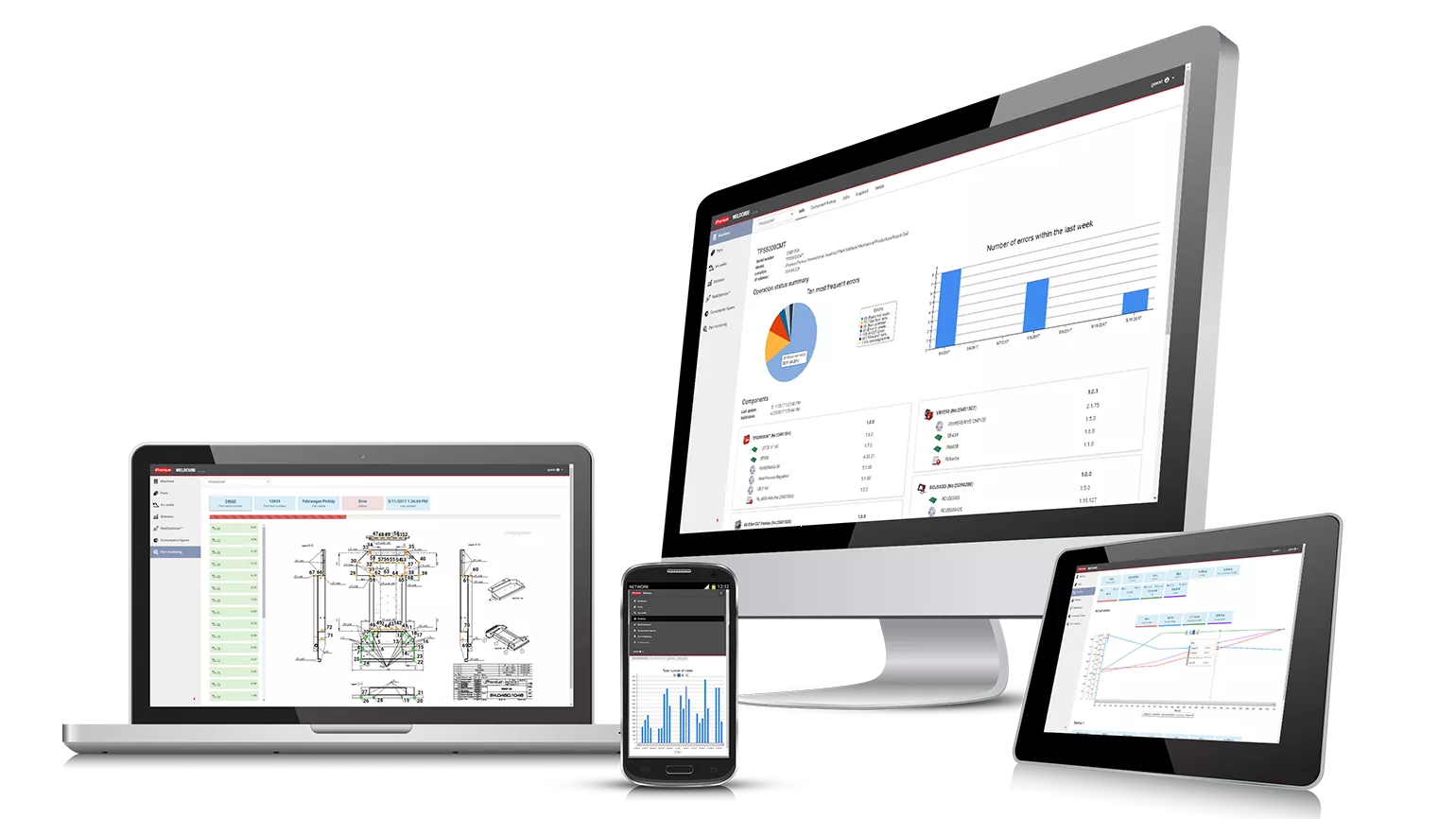
Production Monitoring with WeldCube.
One piece of software - all power sources at a glance.
Process and cost optimization are of central importance for the automotive and supplier industry, and the documentation of production data is an important key to achieving this. With WeldCube from Fronius, you can continuously record and analyze the welding data of all power sources on all production lines.
The result: greater transparency, safety and verifiable weld quality for your series production.
Save time and money with WELDCUBE:
- Access welding data of up to 50 power sources centrally irrespective of the device, and analyze data at the touch of a button
- Create and manage jobs centrally and distribute to the power sources
- Optimize costs with simple analysis of consumption of gas and filler metals
- Call up data quickly when servicing is needed, and therefore reduce downtimes
- Continuous data documentation for quality assurance and to comply with standards
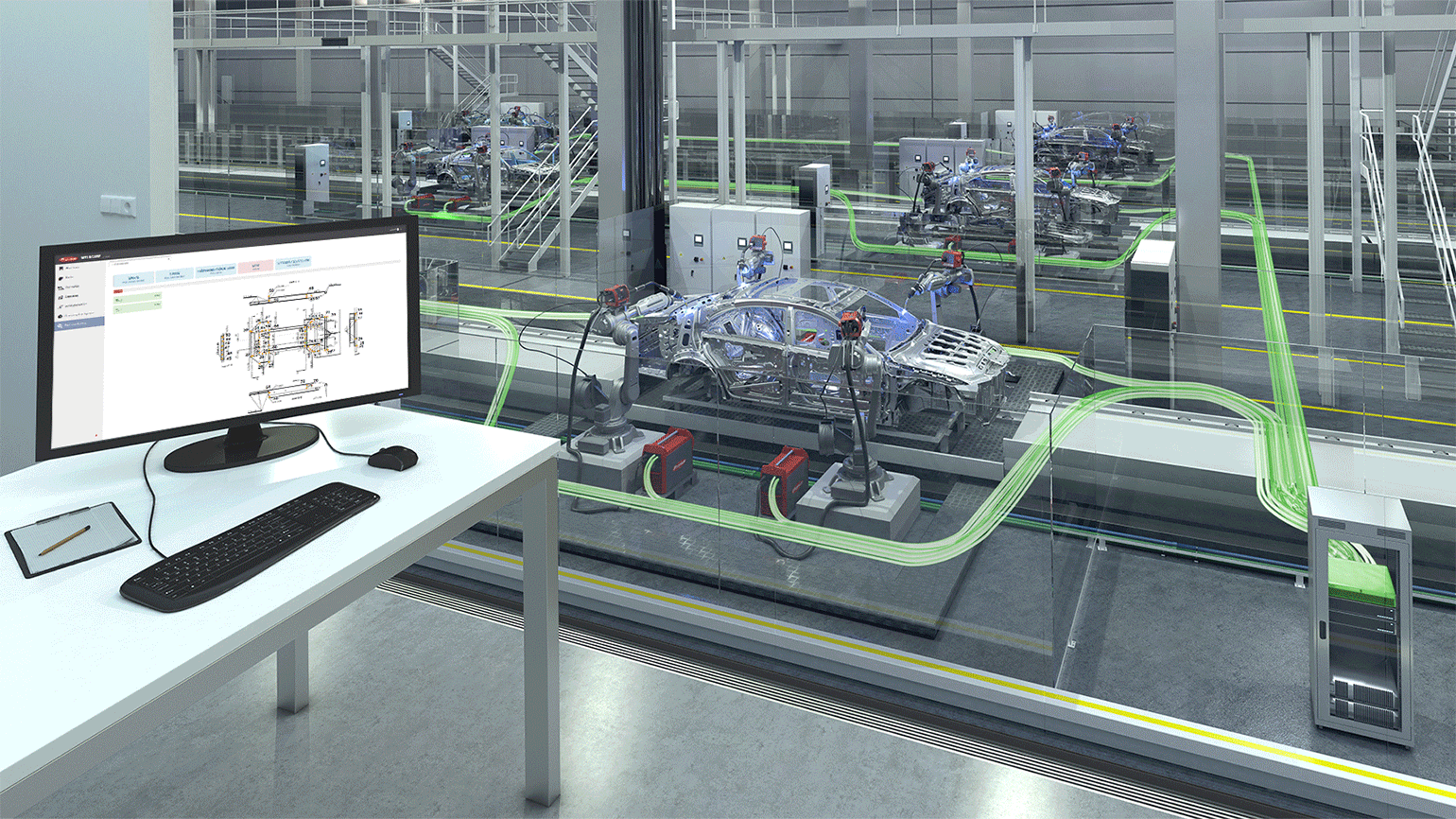
Benefit from Our Services
Increase productivity and performance
We support you from the startup phase of your production process. Tailor made and quick integration of our products will benefit your production with optimized cycle times, less re-work and ease of use.
Expert know-how for your employees
Our employees are trained to offer top quality level of expertise for your applications.
Make optimum use of resources
We help you to optimize your production processes and parameter settings.
Reduction downtime
We take over the servicing and maintenance of your welding systems, helping you avoid downtimes and saving personnel costs as a result.


